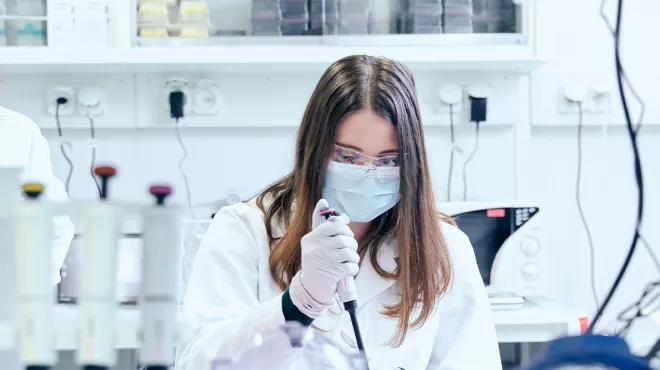The coronavirus that causes COVID-19 is mind-bogglingly tiny. Stacked end to end, a thousand of them could fit across the width of a human hair. How does something so small cause so much harm? More importantly, how do we stop it?
An answer to these questions, in part, could lie within a devious and complex...copy machine.
The search for new and better antivirals against the coronavirus that causes COVID-19 and its variants is one of the most urgent needs in medicine, one pursued by scientists around the world. And it’s not the only need – other coronaviruses could also have pandemic potential. Coronaviruses are a family of viruses notorious for causing not only COVID-19 but also outbreaks such as SARS and MERS (in 2003 and 2012, respectively).
“The historic speed at which we have developed and rolled out COVID-19 vaccines shows how far science has come,” says Stephanie Moquin, a virologist at Novartis. “But we still need effective coronavirus antivirals, not only to help patients who become infected, but also to have drugs that are ready to stop any other coronaviruses that may emerge in the future.”
We can’t ever be caught off-guard again like we were with COVID-19.
John Tallarico, Head, Chemical Biology and Therapeutics at Novartis
At Novartis, researchers are focused on the molecular machine that coronaviruses use to hijack human cells and replicate themselves. All coronaviruses depend on this machine, not just the one that causes COVID-19. So efforts to sabotage it may be a key to developing a new pan-coronavirus antiviral – one with the potential to help end the current pandemic, as well as prepare the world for future threats posed by other coronaviruses. This machine could even yield clues to a possible “cure” for some types of the common cold.



